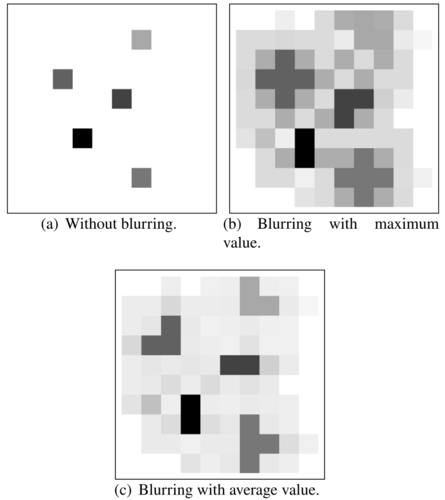Software: TINTOlib - Python library for transforming tabular data into images with 2-Dimensional Convolutional Neural Networks
Description
TINTOlib is a state-of-the-art library that wraps the most important techniques for the construction of Synthetic Images from Tidy Data (also known as Tabular Data).
Features
- Input data formats (2 options):
- Pandas Dataframe
- Files with the following format
- Runs on Linux, Windows and macOS systems.
- Compatible with Python 3.7 or higher.
Citing TINTO: If you used TINTO in your work, please cite the SoftwareX:
@article{softwarex_TINTO,
title = {TINTO: Converting Tidy Data into Image for Classification with 2-Dimensional Convolutional Neural Networks},
journal = {SoftwareX},
author = {Manuel Castillo-Cara and Reewos Talla-Chumpitaz and Raúl García-Castro and Luis Orozco-Barbosa},
volume={22},
pages={101391},
year = {2023},
issn = {2352-7110},
doi = {https://doi.org/10.1016/j.softx.2023.101391}
}
And use-case developed in INFFUS Paper
@article{inffus_TINTO,
title = {A novel deep learning approach using blurring image techniques for Bluetooth-based indoor localisation},
journal = {Information Fusion},
author = {Reewos Talla-Chumpitaz and Manuel Castillo-Cara and Luis Orozco-Barbosa and Raúl García-Castro},
volume = {91},
pages = {173-186},
year = {2023},
issn = {1566-2535},
doi = {https://doi.org/10.1016/j.inffus.2022.10.011}
}
Methods
| Methods | Class | Features | Hyperparameters |
|---|---|---|---|
| TINTO | TINTO() | blur | problem algorithm pixels submatrix blur amplification distance steps option random_seed times verbose |
| IGTD | IGTD() | problem scale fea_dist_method image_dist_method max_step val_step error switch_t min_gain zoom random_seed verbose | |
| REFINED | REFINED() | problem n_processors hcIterations zoom random_seed verbose | |
| BarGraph | BarGraph() | problem pixel_width gap zoom verbose | |
| DistanceMatrix | DistanceMatrix() | problem zoom verbose | |
| Combination | Combination() | problem zoom verbose | |
| SuperTML | SuperTML() | problem columns font_size image_size verbose | |
| FeatureWrap | FeatureWrap() | problem size bins zoom verbose | |
| BIE | BIE() | problem precision zoom verbose |
TINTOlib Crash Course:
TINTOlib Crash Course repository provides a comprehensive crash course on using TINTOlib, a Python library designed to transform tabular data into synthetic images for machine learning tasks. It includes slides and Jupyter notebooks that demonstrate how to apply state-of-the-art vision models like Vision Transformers (ViTs) and Convolutional Neural Networks (CNNs) to problems such as regression and classification, using TINTOlib for data transformation.
The repository also features Hybrid Neural Networks (HyNNs), where one branch is an MLP designed to process tabular data, while another branch—either CNN or ViT—handles the synthetic images. This architecture leverages the strengths of both data formats for enhanced performance on complex machine learning tasks. Ideal for those looking to integrate image-based deep learning techniques into tabular data problems.
Getting Started
You can install TINTOlib using PyPI:
pip install torchmetrics pytorch_lightning TINTOlib imblearn keras_preprocessing mpi4py
To import a specific model use
from TINTOlib.tinto import TINTO
Create the model. If you don’t set any hyperparameter, the model will use the default values (read documentation).
model = TINTO(blur=True)
To generate the synthetic images use .generateImages(data,folder) method.
model.generateImages(data, resultsFolderPath)
How to use TINTOlib - Google Colab crash course
Once the images have been created by TINTO, they can be imported into any project using CNNs, ViT and HyNN. Note that you access in more examples in TINTOlib Crash Course.
In order to facilitate their use, a Jupyter Notebook has been created in which you can see how the images are read and how they can be used as input in a CNN, ViT and HyNN.
Converting Tidy Data into synthetic image
For example, the following table shows a classic example of the IRIS CSV dataset as it should look like for the run:
| sepal length | sepal width | petal length | petal width | target |
|---|---|---|---|---|
| 4.9 | 3.0 | 1.4 | 0.2 | 1 |
| 7.0 | 3.2 | 4.7 | 1.4 | 2 |
| 6.3 | 3.3 | 6.0 | 2.5 | 3 |
Simple example with TINTO method
The following example shows how to create 20x20 images with characteristic pixels with TINTO method:

More information
- TINTOlib Crash Course
- For more detailed information, refer to the TINTOlib ReadTheDocs.
- GitHub repository: TINTOlib Documentation.
- PyPI: PyPI.
License
TINTOlib is available under the Apache License 2.0.

